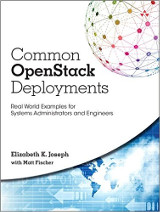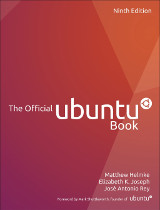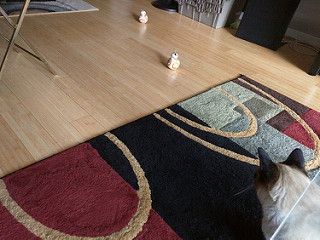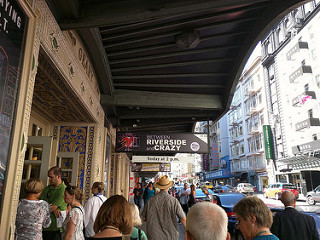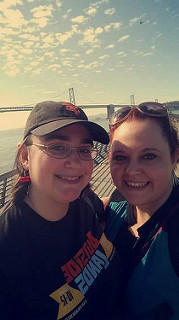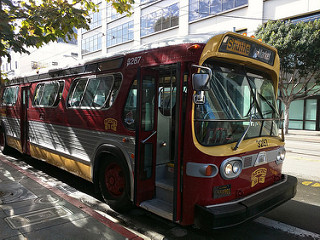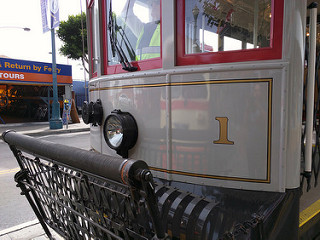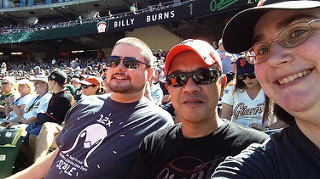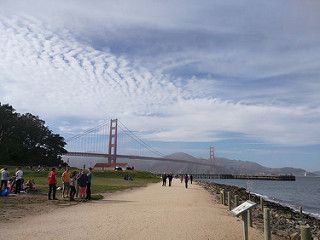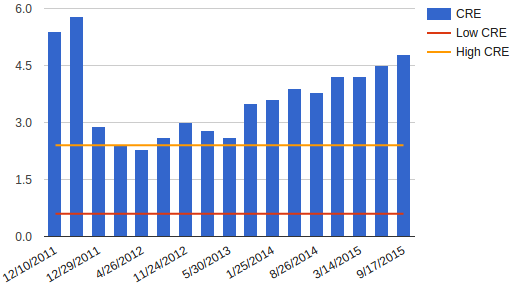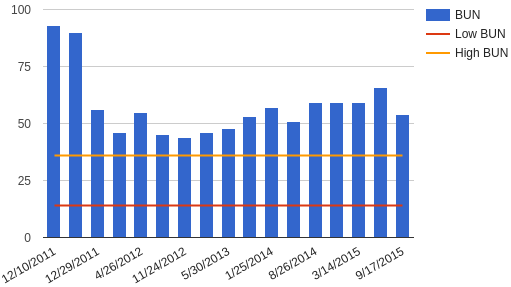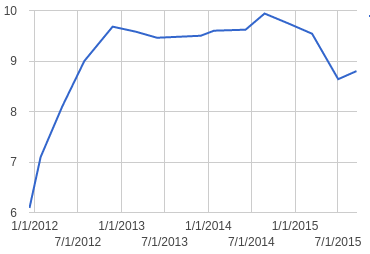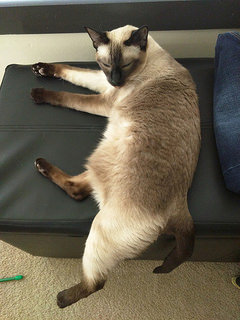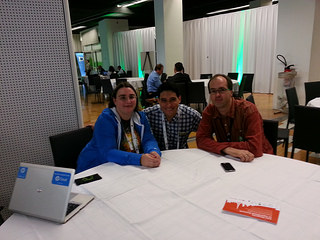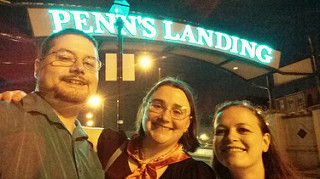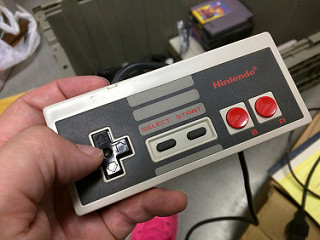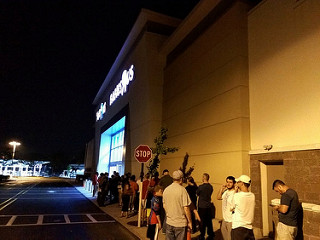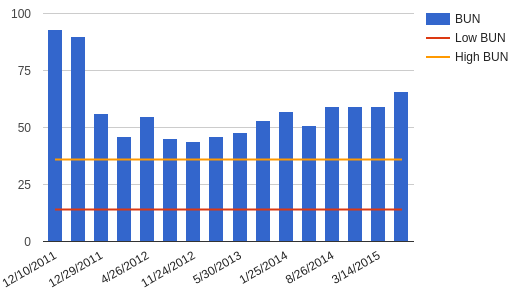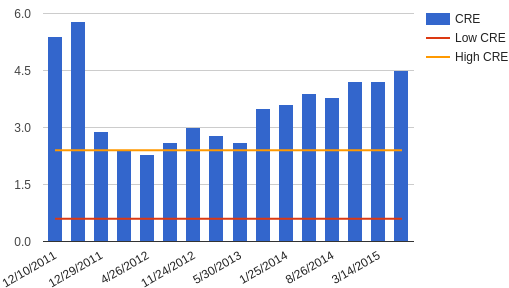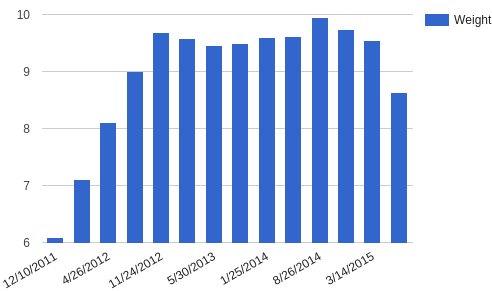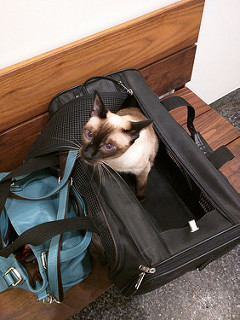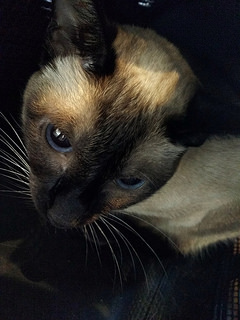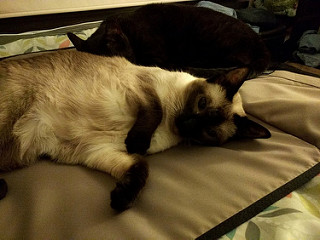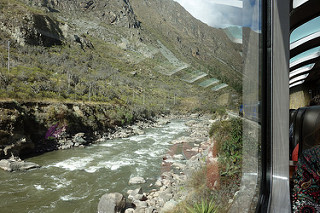Having spent much of September here at home in San Francisco, I’ve split my time between work, writing my book and getting out to enjoy this beautiful city we live in. Going out has certainly taken time away from writing, but I’d probably go bonkers and would likely be unproductive anyway if I stayed home, so here we are!
A couple weeks ago I had my friend Steve over and he brought along his BB-8. I had snagged my own following out trip to Philadelphia so we had a fun evening of chatting, playing with our BB-8s and enjoying a nice east coast seafood dinner at one of my favorite restaurants.
One of the first enjoy-our-city outings last month MJ and I did together was to do something we’d never done in San Francisco before: Go to the theater. MJ had heard good things about Between Riverside and Crazy, so he got us tickets and we went one Sunday afternoon. It was being performed at the beautiful A.C.T. Geary Theater near Union Square, an easy walk from home. With seats in the uppermost balcony we had a nice view of the stage and everything went beautifully. I think this was the first time I’d been to a non-musical play and I found myself quickly lost in the story and characters. I’d recommend the play, it has finished the run in San Francisco, but this was the west coast debut so I’m sure it’ll pop up somewhere else. I think we’ll be doing this again.
September also means the Jewish High Holy days of Rosh Hashanah and Yom Kippur. We attend services at the synagogue where we are members and on Yom Kippur we spent the whole day there. Having only celebrated these holidays for a few years, I’m still learning a lot and trying to bring it into my own life as a tradition. I’m getting there and it was nice to spend the time with MJ away from work and hectic events.
The next weekend my friends Jon and Crissi were in town. I had fun with the fact that their visit synced up with Muni Heritage Week and on Saturday morning I met up with them briefly to check out the historic cars and buses that they had out for the event.
Unfortunately due to time constraints I couldn’t ride on any of the special buses or street cars on the free routes they were running, seeing them had to be enough! And I was fortunate that they didn’t do the weekend in October when I’m typically traveling.
More photos from Muni Heritage Weekend here: https://www.flickr.com/photos/pleia2/albums/72157659546034872
As Jon and Crissi went to meet friends for lunch, I headed home to meet MJ so we could go to a Giants vs. A’s baseball game over on Oakland. It had been a couple years since I’d been to an A’s game and so it was fun to visit the Coliseum again. We were joined by a friend (and sushi chef) who we’d been meaning to see socially and found a game to be the perfect opportunity. I was certainly conflicted as I dressed for the game, having an unconventional love for both teams. But I ended up dressing to cheer for the Giants, and with a score of 14 to 10, the Giants did prevail.
More photos from the game here: https://www.flickr.com/photos/pleia2/albums/72157659505888796
The weekend concluded on Sunday as we met Jon and Crissi for brunch. I met them at their hotel at Fisherman’s Wharf in the morning in order to introduce them to the cable car. In the long line we got to see cars turned around a couple of times, and had lots of time to chat before finally getting on the car. The cable car ends its trip at Powell and Market, which was then a quick walk back home to meet MJ and hop in the car.
We took them across the city to see the ocean and have brunch at the edge of Golden Gate park. After brunch we made our way over to the Queen Wilhelmina Tulip Garden and then to see the Bison living in the park. Back in the car we drove up to and over the Golden Gate Bridge to take pictures down at Fort Mason. Then it was back over the bridge to Crissy Field where we got to take even more pictures (and so Crissi could visit Crissy Field, of course). Our journey then took us back toward their hotel, where our car conveniently broke down about three blocks from where we were planning on parking. Fortunately we were able to ease into a street parking spot, which gave us the ability to come back later to handle getting the poor thing towed. So then we were off to Pier 39 to get a nice dose of tourism and visit with the sea lions and wrap up our day!
I love doing the tourist things when friends and family are in town. We live in such a beautiful city and getting to enjoy it in tourist mode while also showing it off is a whole lot of fun. Naturally it was also fun to catch up with Jon and Crissi, as we missed them the last time we were in Philadelphia. They had just successfully completed another year of running the annual FOSSCON conference so I got to hear all about that, and it made me really want to go again next year.
More photos from our adventures across the city here: https://www.flickr.com/photos/pleia2/albums/72157659578719275
